‘Irish Lake District’, County Fermanagh
We’d come for a family wedding in County Cavan, and spent a few days exploring the “Irish Lake District” in neighbouring County Fermanagh.
It was July, but the wood-burner was going ding-dust, crackling and hissing as it threw heat into the kitchen of the cottage we had rented. The window framed a view more grey than green, and the horizon was a smudge of low-hanging clouds. While much of the UK was frazzled from heat exhaustion, County Fermanagh had yet to catch the sun.
I texted a picture of the wood burner in full flame to a Fermanagh friend. His response was swift: “Ha! The locals say that for six months of the year Lough Erne is in Fermanagh, but for the other six months Fermanagh is in Lough Erne.”
I knew what he meant. The road to the cottage, in Belleek, literally drove us through Lower Lough Erne, across Boa Island, before delivering us back on to the shoreline.
It may all sound a bit “Belleek”, but the weather proved no hindrance. We made excursions in between showers to Florence Court, an 18th-century manor with grounds big enough to warrant a bike-hire station. We hiked up Cuilcagh mountain via a boardwalk nicknamed Stairway to Heaven. The summit, between scudding clouds, delivered views that were indeed heavenly – a green, maze-like landscape puddled with water.
Our best discovery, though, was the Lough Navar forest drive, which winds through pinewoods to the top of the Magho Cliffs. One day I stopped off to fish Lough Achork, one of three loughs in the reserve, and spent a happy few hours walking forested trails in between fruitlessly casting a fly out for brown trout.
At night, our rose-creepered cottage became a sanctuary in a watery world. There were stacks of Irish novels and board games, a selection of cheeses from nearby Fivemiletown Creamery on the table, a splash of whiskey in our tea. And the log-burner was going ding-dust all night.
Andy Pietrasik
Picture-perfect train ride in Lugano, Switzerland

Sipping on a cappuccino as locals called “ciao”to each other, I had to remind myself I was in Switzerland rather than Italy. Lugano, a town in the south of the country, on a large lake of the same name in the Swiss canton of Ticino, is a slice of the Mediterranean in a country famed for its Alpine peaks.
Getting here by train used to be a beautiful but long endeavour, navigating switchbacks and curvy tracks up steep mountains. However, the completion during the pandemic of the Ceneri base tunnel cut the journey time from Zurich to less than two hours (from more than three). With a Swiss Travel Pass in hand (allowing unlimited travel on trains, trams, buses and ferries – my second-best discovery of the year), I boarded the train and watched peaks, lakes and postcard-perfect villages pass by my large picture window.
Arriving in Lugano, I took an electric ferry to the fishing village of Gandria, and stretched my legs on the two-mile Olive Grove Trail, along limestone cliffs and past baroque churches. At Castagnola, the end of the trail, I grabbed freshly made pizza before catching the prompt bus back to town. It was a revelation to see laid-back Italian charm and Swiss efficiency meet in such beautiful fashion – all within a day’s train travel of my door.
Phoebe Smith
Welsh narrow gauge railways

The emergence of Wales as the world capital of heritage railways has been a long time coming. There were slate quarries from Roman times, then in the 19th century came the somewhat ramshackle railroads that allowed extraction and export. Welsh slate went all over the world, roofing large parts of many cities, including Sydney, Hamburg and New York.
The railways were just an element of that success, and when the industry died after the first world war, they died too. Many locomotives were abandoned in their sheds; others were sold for scrap or to antique dealers. It took a small group of heritage freaks to see the potential, then gather the finance and volunteers to rebuild. Now a dozen lines operate regular services through spectacular landscapes. Ffestiniog remains a favourite, linking mountain and sea via 14 miles of sublime scenery. At Porthmadog it connects to another service, the Welsh Highland line, which runs up to Caernarfon. The success of such routes has had all sorts of bonuses: Bala Lake Railway found an original slate quarry steam locomotive from the 1880s gathering dust at a speedway track in Indianapolis and brought it home. Another was found in a swamp in Puerto Rico. Now there are heritage lines all around Wales and the country is a world leader for this wonderful aspect of industrial heritage.
Kevin Rushby
Far from the hedonistic crowd in Sicily
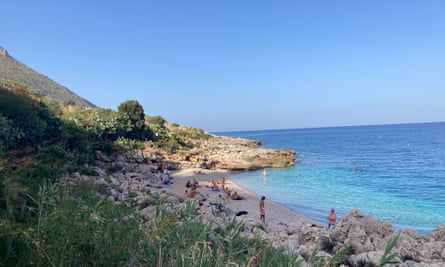
It’s the water. None of the usual cliches work. Crystal clear? The sea at the tiny Cala dell’Uzzo beach in Zingaro nature reserve was as transparent as mountain air. Turquoise? No precious stone shimmers in this shade of blue. The beach of smooth white pebbles shelved steeply, so within a few steps I was waist-deep in the warm Mediterranean, with shoals of fish lazily investigating my ankles.
After my swim I was euphoric. “This is the most beautiful beach I’ve ever been to!” “Really?” a sceptical companion responded. Of course he was right, but just at that moment, after a tough six-mile walk on an unseasonably hot October day, I believed it. And I do know that I have never, ever swum in lovelier water.
Zingaro is in Sicily’s western region, sheltered from the prevailing winds by Capo San Vito, a few hours’ drive from Palermo. It has a noble history. In 1980 the authorities started building a coastal road through this pristine landscape of limestone hills, scalloped bays and subtropical vegetation. They even blasted a preparatory tunnel through the first hill before being stopped by outraged locals.
Outraged Sicilians are effective. Zingaro became the island’s first protected area, accessible only on foot, and with an impressive list of flora and fauna, hidden beaches and tiny museums. The full circuit of the reserve is a tough nine miles and even the abbreviated route we did is a rugged six. Quite safe, I think, from the hedonistic White Lotus crowd.
Hilary Bradt
Medieval wonders in Kent

The Scarecrow put his pistol on the table. Then, with a clatter, his dagger. His pint had a straw in it, so he could enjoy his lager without removing his sackcloth mask. He held up a gauntleted hand.
“Don’t ask me to give my real name. I won’t tell you.”
He indicated the men and women dressed, like him, in 18th-century costume, listening to a band play a sea shanty.
“My defenders are all around and will back me up.”
We were in a pub in the village of Dymchurch. It was beginning to dawn on me that this corner of England is its own little world. I’d called in because church-crawling is thirsty work. That was what had brought me to Romney Marsh. They are proud of these ancient buildings round here, proud too of their history of smuggling. Hence the Scarecrow and his cronies – locals who reenact piratical yarns at the biennial Day of Syn.
The Marsh is beautiful and eerie, the churches too. In the churchyard of Saint Clement’s in Old Romney, pilgrims had left cockleshells and hag stones on film-maker Derek Jarman’s grave, offerings from the beach at his beloved Dungeness. Writer E Nesbit is buried at Saint Mary in the Marsh, under a wooden marker scabbed with lichen. Five miles west in Brenzett is Saint Eanswith’s, the church that inspired her ghost story Man-size in Marble – in which the stone figures of knights rise from their tomb.
Best of all was Saint Augustine, Brookland, with its 13th-century octagonal bell tower. The bellringers were at work, calling the faithful to evensong, and the timbers creaked like a ship. We might have been sailing for some strange land, but in truth we were already there.
Peter Ross
Sarajevo, Bosnia and Herzegovina

It takes just eight minutes for the cable car to glide from Sarajevo old town to the top of Trebevic mountain. The cityscape of red roofs and minarets is replaced by green fields and dense woodland. The mountain was host to the Winter Olympics in 1984 and we walked part of the abandoned bob sled track – an artillery position during the Bosnian war, now pretty with graffiti. This is where Sarajevans come to hike, said my guide, Muhamed.
I wasn’t expecting to be this captivated by the capital of Bosnia and Herzegovina. I’d come for the countryside beyond – the forested gorges, wild horses and wilder rivers. But this city, so brimming with life and stories, had me wanting to stay longer. We stopped at the spot where Archduke Franz Ferdinand was assassinated in 1914, changing the course of history for ever. We wandered the main bazaar and cobbled streets, passing mosques, orthodox churches, the Catholic cathedral and shisha cafes. On Ferhadija street “East” and “West” are inlaid in the pavement – look one way and the scene could be Istanbul, the other Vienna.
Sites like the Tunnel of Hope, the only connection between besieged Sarajevo and the outside world, can’t be ignored. But it’s in the nightlife at Jazzbina – or a cooking class at Mustafa and Mersiha’s home – that the Sarajevo of today comes alive: a welcoming place with fascinating culture and a setting to rival any city in Europe.
Jane Dunford
Jane travelled to Bosnia and Herzegovina as part of a trip with Intrepid Travel and USAID
Inishowen, Donegal, Ireland
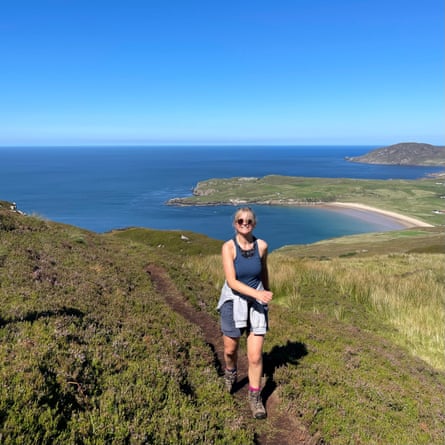
We ended up in Inishowen with no map, no guidebook and no plan, our destination dictated by the 150-year-old thatched cottage I’d booked on a whim. We drove in via Mamore Gap, a clutch-busting pass on the Wild Atlantic Way that climbs 250 metres through the Urris Hills. There were views of a turquoise sea as we crossed the gap and began our winding descent to Urrismanagh, where a field of friendly donkeys awaited.
Each morning began with a swim in Lenan Bay, a sheltered, sandy beach with surprisingly temperate waters. Afternoons were spent exploring, either on one of the well-marked but strenuous walking trails or, when the weather was less kind, pootling around in the car. We enjoyed seafood chowder at Nancy’s Barn in Ballyliffin, and a tour by a former resident of the Famine Village, an eccentric museum of Irish history on the Isle of Doagh.
The village is opposite the spectacular Five Finger Strand, where in 1988 the Irish army and the Gardaì dug up IRA weapons, including 100 Kalashnikov rifles and explosives. Further round the peninsula is Malin Head, the most northerly point of Ireland, and now a pilgrimage site for Star Wars fans after scenes in The Last Jedi were filmed here. When we arrived, a brave couple from the US were getting married at the lookout – their somewhat eccentric decision to get married at one of Ireland’s windiest and wettest spots was rewarded with a brief break in the rain.
Helen Pidd
Cornish mining vale
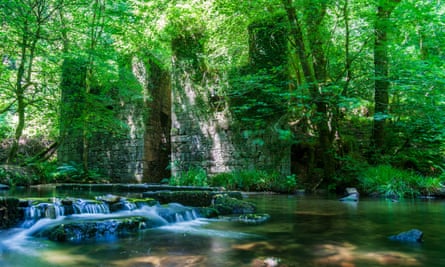
In May, staying with friends in Ponsanooth, between Falmouth and Redruth, we visited Tregothnan, home of England’s first homegrown tea; the subtropical gardens at Trelissick, overlooking the river Fal; and the coastal inlet of Restronguet Creek. The real discovery, however, was Kennall Vale nature reserve. This tranquil woodland glade once housed a gunpowder factory that supplied the area’s tin mines.
In the mid-1800s, Kennall Gunpowder Mills was producing up to 5,000 barrels of gunpowder a year. The woods are dotted with rusted cogs, half-buried water wheels, skeletal mill houses and steps that lead nowhere. Thick moss, roots, rampant vines, ferns and leafy tree parasols mark the passage of time. Kennall Vale is in the wider Gwennap mining district, one of the 10 areas of the Cornish Mining world heritage site.
The area’s superior granite means the vale also saw use as a quarry, and there are two black pools bound by sheer rock walls. By then, blasting techniques had moved on, and the factory closed in 1910. There were explosions and accidents, of course, and I found Kennall Vale as haunting as it is beautiful. Birdsong and a gurgling water stream enhance the setting, but there is a frisson that would keep me from returning after dark. At dusk some will recognise the calls of the common pipistrelle and greater horseshoe bats. In the nook of a tall tree a sign reads: “Fairies live here.” Imagination will do the rest.
Teresa Machan
Glasgow to Edinburgh by canoe

When I read about the 54-mile Glasgow-to-Edinburgh canoe trail, I immediately asked a friend from Colorado to kayak it with me. Friends in the US thought this sounded epic – you cannot paddle or hike so easily from city to city there – but a few UK pals scoffed. Why would you do this when the Great Glen and Loch Ness are just a little further north?
But we weren’t after wilderness. We just wanted to have a good time, or at least a good story. We booked beds in Glasgow, Kirkintilloch, Falkirk, Linlithgow and Edinburgh, stuffed foldable Oru kayaks into special backpacks, and took the train north. The Forth & Clyde canal felt industrial as we paddled east out of Glasgow, past historic factory buildings and under rumbling road bridges. Soon, buildings were replaced by trees, urban noise by birdsong. We not-so-secretly hoped for a disaster of epic proportions, perhaps a capsize, miserable weather and a bitter row – all good material for the pub.
Instead, as we floated somewhere east of Kirkintilloch, we moaned about how lovely it was: all blue skies, nesting swans, grazing sheep. Mossy trees stretched their branches across the water, making the forest enchanting and timeless. We did this for four days, waking each morning to set up kayaks and paddle miles upon miles to the next hot dinner. We’d hoped for mayhem; instead we got meditation. I’m already plotting to do it again.
Kassondra Cloos
Madrid, with my 70-year-old mum
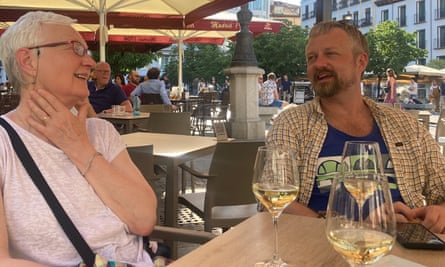
The heat was a concern, but nothing compared with the prospect of my mother not enjoying my favourite European city. We were travelling as part of her 70th birthday celebrations, and my brother – also a first-time visitor to the Spanish capital – had come over from his home in the US. The pressure was enormous and it would only take one slander against the city for the whole thing to descend into an ugly brawl.
Yet despite or because of the fact that we spent most of our three days gently day-drunk, things went another way. As on every trip to Madrid, the best of it was in Calle de Echegaray. Here two of the city’s, if not the world’s, best bars lie within a few minutes’ walk of each other. Salmon Guru is a painfully hip cocktail bar, all neon lights with extraordinary glasses in the shapes of things like scarab beetles and a leopard weeping blood-coloured jam. Mum thought the whole thing was preposterous fun.
A few doors north, La Venencia is a serious drinking hole that bans photography, writes tabs on the bar in chalk, and only serves one drink – sherry – from five dusty casks. It’s fantastically surly, and probably my favourite bar in the world. On this occasion the barman asked if my brother and I were travelling with our mum, then halved our bill and wished her happy birthday. I’m not sure mum knew exactly what was going on by that point, but she was smiling.
Jamie Lafferty
Rocky inlets in Cassis, France
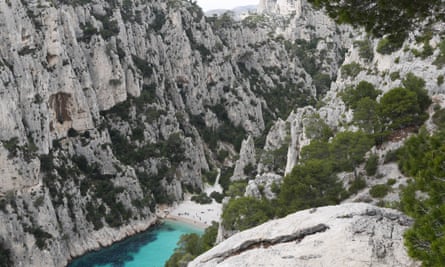
The joy of slow travel is the unexpected, and on a family overland adventure to Corsica, that place is Cassis – a port between Marseille and Toulon. We arrive by train on a sunny Sunday, sweaty and tired. Without a second thought, wheelie bags abandoned among bronzed bodies, we jump into the sea in our pants.
Beyond the beach, around a rocky outcrop that overlooks the privately owned 13th-century Château de Cassis, the port has swarms of fish and a parade of boats, alfresco seafood and aperitifs, homeware and sweet shops, men playing pétanque. April is too early for most visitors.
The following day, clouds are building on the horizon, so we go hiking. Parc National des Calanques is a 10-minute walk from town and closed in summer because of the fire risk – another reason to feel “off-season” smug. The national park covers 33 sq miles, but some of its most impressive scenery – natural inlets called ports, created by wind, sea and rain 120m years ago – is close to Cassis. Loaded with baguettes, cheese and florentines bigger than our heads, we head out on a five-mile hike to Port-Miou, Port Pin and harder-to-reach Calanque d’En-Vau. What should take three hours takes the best part of six with endless detours and views, soaking up greenery and vitamin D in equal measure.
Back in town, we sip white wine and plot a return visit. Next time we’ll make this our final destination.
The writer travelled with overland tour operator Byway, staying in Jardin d’Emile (doubles from €90)
Holly Tuppen
Lord of the Rings territory, Jutland, Denmark
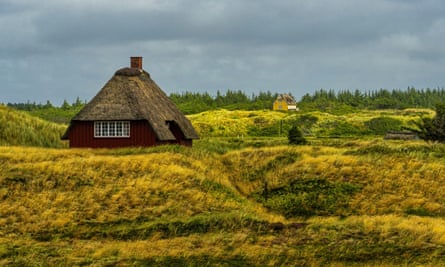
Was anybody else dragged around “boring” castles as a child by history-obsessed parents? You really need to be a gifted storyteller with a love of gruesome details to justify dragging small children away from a day at the beach. Step forward Danish historian and Viking-esque TV host Casper Clemmensen, who on our recent trip to Aarhus, northern Denmark, brought to life the rugged Jutland coast, which he researched for his new book on the master of epic mythology – Lord of the Rings author JRR Tolkien.
Clemmensen’s book, Tolkien and the mythical Jutland (out in English next year), looks into Tolkien’s lifelong obsession with ancient northern European maps, tribes and battles. Clemmensen’s theory is that Tolkien’s entire “Middle-earth” creation is a homage to the Jutland area with its rolling meadows fit for Hobbit burrows.
A visit brings this theory to life. Our kids – then eight and four – still speak in reverential tones of “Casper the Viking” and his ancient tales of death and destruction. He’s even made it on to their elite list of top three favourite holiday characters – alongside someone who once gave them treble ice-cream scoops. High praise indeed.
Guided tours on the Tolkien trail can be booked on ellevirke.dk
Nazia Parveen
Family watersports in Kefalonia

Our list of demands for a family holiday grows increasingly complex. At 10 and 12, our children want more independence, they tell us, though not organised fun. They want a pool and a flat to retreat to. And then there’s what my wife, Emma, and I want.
After several late nights of online research we came across Paliki Beach Club in Kefalonia, which seemed to offer it all. Apartment and pool for the kids and a beach from which we could take out dinghies, catamarans and paddleboards for exploring.
Paliki has young, enthusiastic staff, all of whom sail or windsurf. They would teach clinics in the morning, or just rig our craft of choice and leave us to it. Both children took to catamaran sailing, hanging from the trapeze as though they had been doing it all their lives, or diving from the trampoline into the sea, searching for turtles.
They even opted for the organised fun of guided paddleboarding, which gave Emma and me the opportunity to head out on performance boats, to blow off cobwebs spun through too many hours at our desks. Our demands may change by next year but, by luck or design, this summer we nailed it.
Wyl Menmuir
History and ice-cream in Berlin
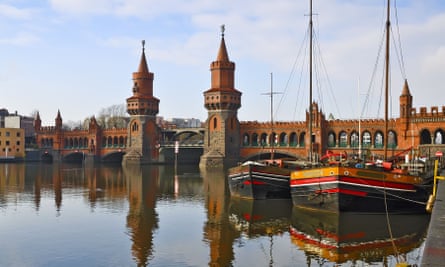
Berlin is famous for many things, not least its long, turbulent history and the hedonism of its nightclubs. It is not an obvious choice for a first family holiday post-pandemic.
My family of four visited at Easter, when Berlin was still gripped by the tendrils of a bitter winter, and were surprised by how much our children (eight and 10) enjoyed the city.
We stayed in a large two-bedroom flat in the central Mitte district. The river Spree was less than a minute’s walk away.
On earlier visits to Berlin, I had sampled its famous Biergartens, been rejected by doormen at its über-cool clubs and felt sobered by the history in some of its 170 museums. This time, with children, I discovered the city via its ice-cream parlours (there are more than 600) and river. The city boasts 110 miles of pristine waterways, connected by more than 1,700 bridges.
On our last day in Berlin, we took in the German Democratic Republic (GDR) museum, which takes seriously the idea of making history come alive. Its interactive exhibits immersed us in everyday life under the Stasi and were, despite the sombre description, as much fun as all our ice-cream stops.
Lola Okolosie
Off the Slovenia tourist trail
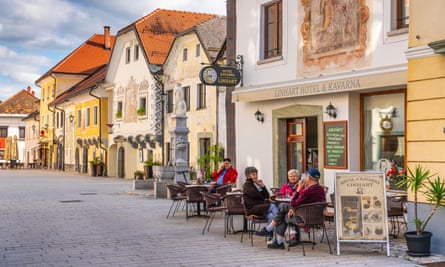
Ljubljana, then Lake Bled. Maybe Piran on the coast or Triglav national park. The classic tourist route around Slovenia means honeypots like Bled are heaving in high season. Visiting with a local this summer, we got to see lesser-known favourites such as Smuk restaurant and guesthouse on the rushing Tržič river, an hour from Ljubljana, and the spectacular Dovžan gorge, carved from multicoloured rock a few miles north. The best discovery, though, was small but cultured Radovljica, just off the main road to Bled, but bypassed by most.
The medieval walled town sits on a high bank of the Sava river, and has the only preserved moat in Slovenia. Most of the action takes place in sunny Linhart Square, lined with bars, restaurants, a contemporary art gallery in the vaulted hall of Šivec House, and shops including the country’s top ceramics studio.
It’s a lively place in summer, with bands in the square every week, and festivals including swing dance and early music. There’s also a gingerbread museum, with costumed ladies making the sweet stuff in a traditional kitchen. The food at next-door restaurant Avgustin is as rib-sticking as most in Slovenia. But there are mountain views from its large terrace, and staff wearing folkloric costumes as Slovenian as the food cheerfully serve the mostly local clientele.
Liz Boulter
Splended isolation in Loch Affric

The Affric Kintail Way runs 44 miles from Drumnadrochit, on the west shore of Loch Ness, to Morvich in the Western Highlands. Glen Affric is one of the biggest rewilding projects in Britain, with farmers, landowners and fishers working to revive 200,000 hectares of land with tree planting, peat-bog restoration and the like. In the decades to come, those saplings will become mighty forests, singing with life. It’s soothing to look into the future and see a cool dampness.
West of Loch Affric, it all changes. The path wiggles west, ambling along rivers, and threading through valleys guarded by hills with names like dragons, Ciste Dhubh, Sgurr na Moraich, Meall a Charra. There is the occasional human trace: one or two bothies, and a few scattered bricks from farmhouses long deserted. But this is mainly stark, blank land. The beauty is harsh and geometric, the colours variations of grey and green.
As the path tiptoes under Creag Ghlas, a stream cuts across the path and plunges down a 30-metre waterfall. Peering over the edge, or to the Munros across the valley, or to the land rippling on the horizon, we had a hint of the sublime. Conversation stalls as attention to the surroundings demand every joule of energy.
This is not the West Highland Way, where the stages are punctuated with shops and hotels, and roads are rarely far if the legs give out. The remoteness demands planning and fortitude. After Cannich, the first stop of a three- or four-day walk, there are no towns, and nowhere to restock. But the rewards more than match the demands.
James Gingell
A culinary pub crawl in Belfast

I last visited Belfast 20 years ago, so returning in 2022, with my Northern Irish boyfriend as handy tour guide, was a revelation. Its cosy pubs glow in winter, epitomised by candlelit White’s. The city’s oldest tavern, it dates back to 1630 and is hidden within the “Entries”, a labyrinth of historic alleyways. Equally mesmerising was the ornate Victorian interior, with its panelled snugs, at National Trust-owned “liquor saloon” the Crown Bar, and – not to be outdone – the Duke of York’s illuminated neon umbrellas and slogans, which straddle cobbled Commercial Court in the Cathedral Quarter. On Union Street, near the lively LBGTQ area, we enjoyed trad music at the Sunflower, its security cage on the front door a thought-provoking relic from the Troubles.
A pub crawl leads, of course, to a hangover – luckily the vast redbrick Saint George’s Market was on hand with its diverse food stalls. We also sought out good-value set menus, such as characterful watering hole the Morning Star’s rosy rump with chips (£15 on weekdays), longstanding Mourne Seafood’s £25 for two courses with wine and – for a treat – the £35 set lunch at Michelin-starred waterside restaurant the Ox, where exemplary plates included venison tartare, sea trout and salt-aged lamb.
Walking it off was a rewarding exercise in architectural juxtaposition, from the Baroque revival grandeur of City Hall to the shiny new riverside Titanic Quarter, with its angular prow-shaped museum and the neighbouring hotel’s spacious, elegant rooms. A final drizzly stroll around the political murals in west Belfast was especially humbling.
Stephen Emms
Scotland’s north coast
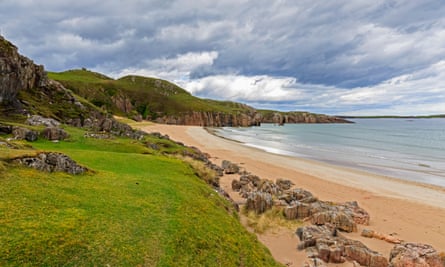
The north coast of Scotland can be a challenge. For me, that’s not because of the distance or the steep roads, but the issue of keeping a cool “heid” behind campervans and road-etiquette deniers. But on this day in early August we were lucky – the weather was grim so there was hardly any traffic. The mainly coastal circuit from Inverness is widely known as the NC500, a hugely successful marketing moniker created in 2015. The main route passes through some of Europe’s most spectacular scenery, and halfway round, in a 50-mile section that takes in some of the UK’s most perfect beaches, there’s one near Durness I’ve called my own.
That day, the drizzle and low cloud shrouded everything, Visibility was in metres rather than miles, so there was no hope of gazing on Ben Hope or the mountains of Assynt. But something happened in the heavens after we negotiated the long haul round Eriboll sea loch and came out on the coast again. Out of the blue, the weather lifted, and there was “my” beach on its bay, bathed in summer light.
A car parkwas added a few years ago, with a sign to theof Ceannabeinne, which you can walk to. The beach was empty. We gazed down on the perfect amphitheatre, the sand flanked by coral-pink rock, bright in the sun, then walked down the grassy slope to the water’s edge. A lone Chinese tourist (rare in itself) mysteriously appeared, sitting on a grassy ledge, but when we looked round again, he’d gone. We felt he must have been an angel.
When we reached Durness, 20 minutes along the road, the smirr (drizzle) had started again, and by the time we got to our hotel at Scourie, it was pouring. But the shafts of sunlight on this dream-like deserted strand had made our day and, on reflection, our whole week away from Edinburgh.
Peter Irvine (author of Scotland the Best)
Hiking in Iceland
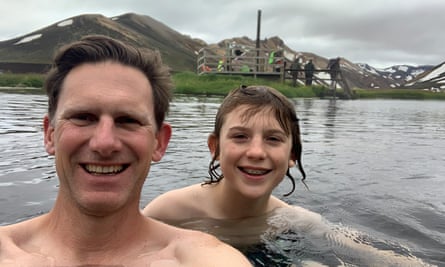
I spent a month in Iceland in 2008 but missed out on the 34-mile Laugavegur trail, one of the greatest in the world.
Our son was born soon after our return and I promised him we would go back one day to do it together. We booked a last-minute trip and upon landing we had the customary dip at the Blue Lagoon before stocking up on noodles and liquorice chocolate in Reykjavik.
Next day the Highland Bus carried us safely across swollen rivers and lava fields into the Icelandic highlands to the start of the Laugavegur Trail.
We took in the multicoloured rhyolite mountains and snow-flecked volcanoes from the comfort of a hot spring before taking to the hills. The initial joy of traversing silent snowfields was soon replaced with aching calves. The snow gave way to mossy valleys with backdrops of glaciers and the odd steaming fissure. Rivers were forded and ready meals heated over a portable gas stove.
We found our rhythm and racked up the steps as we powered through lunar ash fields. We stayed in the FÍ mountain huts (book ahead) along the way and I relived the camaraderie of my backpacking days.
Four days later we finished in Pórsmörk national park, before returning to Reykjavík for a weekend of geothermal pool-hopping. Iceland is now a firm favourite with my son – as much for its Hopp electric scooters as its epic landscapes. It was worth the 14-year wait.
Fergal McCarthy
Youth hostelling in Cirencester
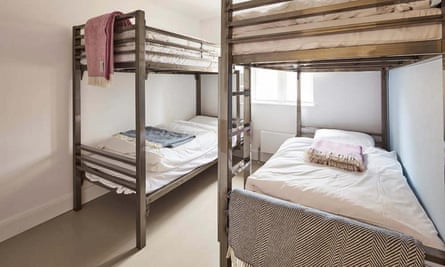
A weekend trip to Pembrokeshire with my two teenage children stood out for a special reason. I couldn’t leave until the end of the school day on Friday, yet I needed to reach the destination by noon on the Saturday. It seemed sensible to break the journey, but I’d left it a bit late and all the available hotels were expensive or a bit grim. Airbnb didn’t really make sense for such a short stop. Then, for some reason, I thought of a youth hostel. Long story short, I booked an en suite room for all of us in Cirencester for £90. We got there around 7pm, had great pizza and ice-cream at a place called Amore Mio, 10 steps away, slept like tops in the bunk beds, and were off before 8am the next morning.
If we’d really been economising, we could have brought our own food and eaten it in the spotless kitchen. It made me re-evaluate youth hostels, and I’ve been thinking of putting together a longer journey, zigzagging between some of the more interesting hostels on the YHA website. They’re in some extraordinary buildings and though they do have an institutional vibe, they offer excellent value.
In the interests of balance, however, I have to say my children do not share my rose-tinted recollection of this trip. The pizza was OK, apparently, but they claim I was a terrible room-mate, who snored and was grouchy. Conclusion: go youth hostelling in 2023, but not with me.
Marcel Theroux
Albania’s 1960s Riviera vibe
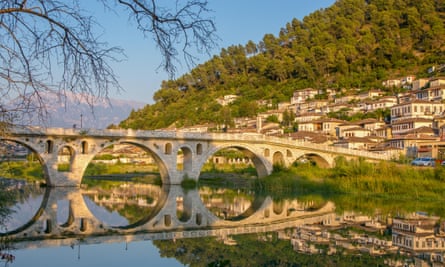
Albania appeared on my radar when I briefly entertained the hope of seeing Spurs play in the 2022 Uefa Conference League final in the capital Tirana. Spurs didn’t make it but Albania stayed on my wishlist, and in September we made it part of a two-country holiday, travelling by hydrofoil from Corfu to Sarandë on in southern Albania.
We immediately fell for its 1960s Riviera vibe, big city beach, waterside Elvis bar – run by an honest-to-God Elvis impersonator – food made with zingingly fresh ingredients, and the Unesco archaeological site of Butrint. Then we took a bus for the four-hour journey to Berat. There are no public buses here, and the privately owned minibuses range from smart and fast to slow and decrepit. We struck gold and boarded one of the former, where one woman proffered her wrist, gesturing that I please fasten her bracelet.
We disembarked aching but intact in Berat to spend two memorable days exploring its Ottoman architecture, hilltop fortress and ethnographic and iconography museums. As we were buying byrek (savoury pastries) in a bakery, the bracelet owner from the bus spotted me and gave a big smile before surprising me with a bear hug.
Yolanda Zappaterra
Pop-up restaurants in Trieste, Italy

I had heard about osmize, so jumped at the chance of visiting one this summer near Trieste.
These pop-up restaurants open at small-scale producers of salami, cheese and wine in the Karst plateau bordering Slovenia. The tradition dates from the 1700s, when Austrian rulers allowed producers to flog their surplus for just eight days (osem means eight in Slovenian).
I warned my children: “It might just be some stew in an old lady’s sitting room, but if it’s weird we can go for pizza later. Just be polite!”
Traditionally a leafy branch (frasca) marks the entrance, but at Gabrovec Ivan, in countryside 10 miles north of Trieste, there was a pot plant in the road and a pink Vespa by the wall. We entered a lovely courtyard dotted with mismatched wooden benches under a big tree, jam-jar lights dangling from its spreading branches.
Joining a queue at the bar I ordered from a short blackboard menu in Slovenian, Italian and German: platters of velvety prosciutto and pancetta, tasty cheese and bread. “Would the kids like sambuca?” we were asked, which confused me, but the Italian word means elderberry, and the sparkling soft drink was served to them in wine glasses with fresh herbs.
As we settled in with our jug of wine – a choice of rosso or bianco, both squisito – a little band struck up on accordions, tuba and guitar. People tapped their feet, the atmosphere crackled and the night began …
osmize.com lists the pop-ups that are open at any one time, year-round.
Gemma Bowes


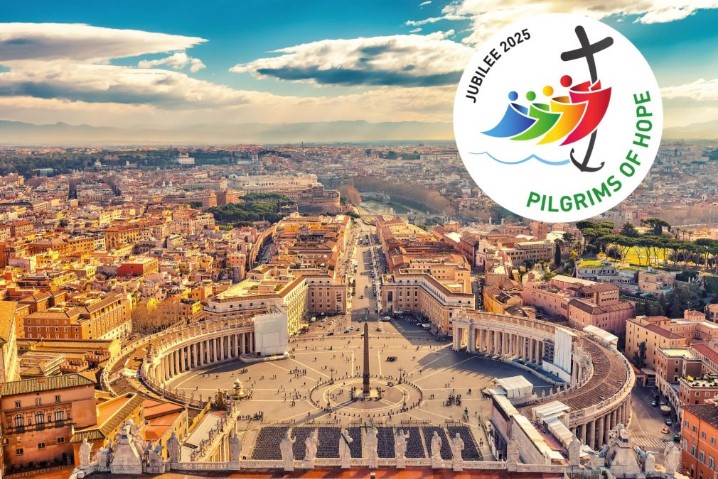
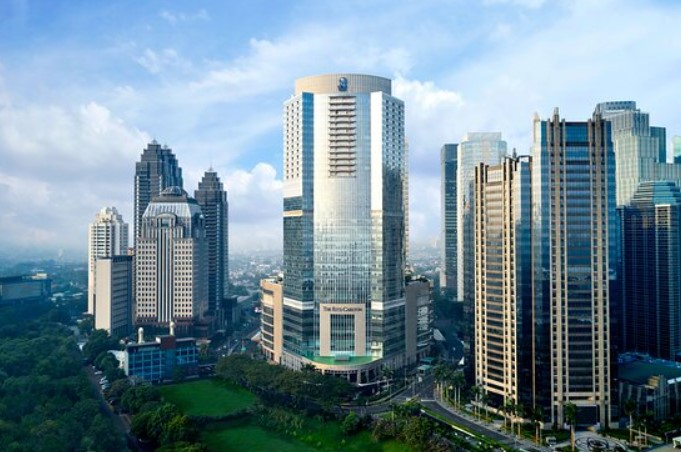
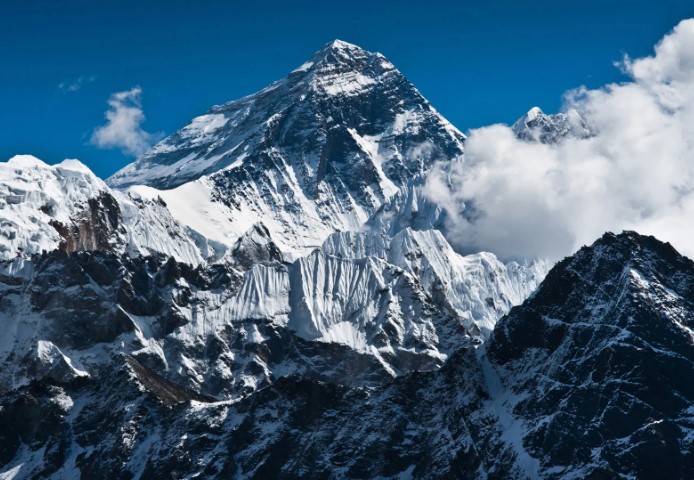
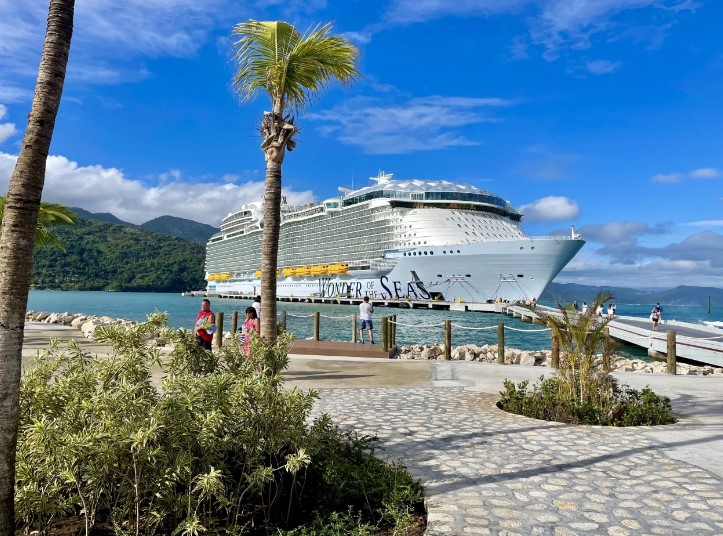
More Stories
6 Reasons To Visit This Underrated European Destination This Summer
Weaker U.S. dollar making travel to Europe more costly
Business-class flights to Europe are as low as $2,494